The legitimate object of government, is to do for a community of people, whatever they need to have done, but cannot do, at all, or cannot, so well do, for themselves in their separate, and individual capacities. Abraham Lincoln
As homeless numbers continue to rise along the West Coast, more and more voters are beginning to realize that the failure of political leaders is among the chief reasons the problem is getting worse. Politicians and the media would like to make homelessness a partisan issue, but the fact is neither political party has been able to stem the rising tide of people with nowhere to go because the leaders of both parties don’t understand the problem.
California’s new plan to clear homeless camps is yet another example of failure to recognize the hard realities of homelessness. Ostensibly a good idea with plenty of voter support, people on the ground have long recognized that sweeping homeless camps is like trying to eat watery soup with a fork.
Like homelessness itself, the reasons for failure to address it successfully are complicated, but can be at least partially illustrated by the examples of San Francisco and Modesto, two cities with different political dynamics but similar failures to halt rising homeless numbers. Modesto is located in Stanislaus County, some 90 miles east of San Francisco.
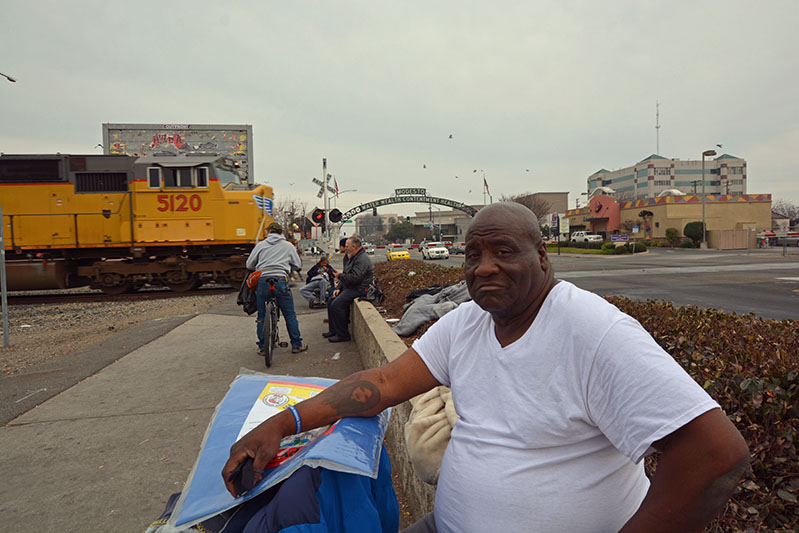
In San Francisco, Gavin Newsom’s much-heralded “Room Key” plan to get homeless people off the streets foundered for any number of reasons, but especially because so many homeless people are mentally ill or desocialized and their presence on the streets is diminished but not eliminated by a hotel room. Costs for hotel rooms in San Francisco can average $260 per day, and transitions from hotel rooms to permanent housing are often as low as 16%.
San Franciscans have been accused of nimbyism for opposing relocation sites for homeless people who continue to populate sidewalks, parks, and spaces under freeway ramps, but it’s perfectly reasonable to resist the presence of a problem that leads to the depreciation of property values, lost business, and health and hygiene hazards. The simple fact is lack of open space means San Francisco has no place to put people who, due to myriad reasons, but especially because of mental illness, are unable to adjust to traditional housing options.
Liberal San Francisco has long been an easy scapegoat for the manifold ills of rising homelessness, but homelessness is not a partisan problem and shouldn’t be a partisan issue. The simple fact is that both political parties abandoned poor and working people decades ago, and neither has been able to accept fundamental facts about poverty in general and homelessness in particular.
While there’s widespread agreement that closing mental institutions has been an ongoing factor in homelessness and difficulties dealing with it, that fact gets ignored when people are surprised that putting homeless people into expensive hotel rooms or emergency shelters doesn’t get them off the streets.
People on the ground know better.
“It’s not enough to get people housed,” said Meggan Clifford recently, “you’ve got to teach them how to stay housed. The longer people are homeless, the less able they are to become self-sufficient, even when inside.” She was speaking not of the mentally ill, but of people whose brains and bodies have become debilitated from the punishing effects of extreme poverty.
Clifford is Project Manager for Modesto’s Downtown Streets Team, a remarkable program that has had unusual success helping people transition from homeless into housing and employment. Like anyone truly familiar with the complicated realities of homelessness, Clifford understands that homelessness is far more damaging to people’s minds and bodies than most casual observers could ever guess. The damage grows exponentially for the homeless and mentally ill.
Modesto made news shortly after the Ninth Circuit Court ruled homeless people could not be prohibited from camping on public property if there were no other options for shelter. Shortly after the ruling in September of 2018, the City of Modesto opened a local park for camping.
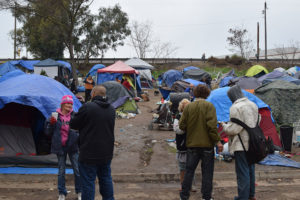
Beard Brook Park soon became known as “Beard Brook Village.” Within a few months, the park was overcrowded with an ongoing rush of people eager to pitch a tent wherever they could on the sloping hillside of the small gully that shaped park boundaries.
Even while Beard Brook Village was burgeoning with a daily influx of campers, city and county authorities — most of them politically conservative — were scrambling to find alternatives to a site that was rapidly running out of room. Rumors grew that executives from Gallo Winery, located across the creek from the park, had demanded the camp be moved because of the eyesore it presented to visiting businesspeople and dignitaries.
Whether or not the move was prompted by demands from Gallo, Beard Brook Village was moved about a quarter mile west to an encampment under Modesto’s Ninth Street Bridge. Named the Modesto Outdoor Emergency Shelter (MOES), campers began moving in from Beard Brook Village early in 2019.
Early on, MOES appeared to offer an answer to the problem of getting homeless people off the streets. Local streets and parks were no longer refuges for people with nowhere else to go, quality of life crimes dropped significantly, and volunteers and service providers found it much easier to deliver help to a designated site than to chase people around town. Visitors began showing up from Sacramento and other cities to study the site as a rare success story in the battle against homelessness.
Though they seldom voiced their concerns publicly, critics of MOES lobbied city and county officials with a laundry list of complaints. Chief among them were drug use and trash onsite.
Because it was considered a “low barrier” encampment, drug use at MOES was treated the way it is in any community. If it was out of sight and caused no problems to others, there was no attempt to search it out.
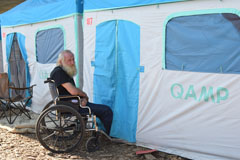
Trash was a problem in large part because city-maintained dumpsters and bins overflowed between infrequent visits from garbage collectors. Onsite Porta-Potties were filthy for the same reason; maintenance didn’t keep up with use. Water was available only in bottles or from a couple of faucets at the northwest corner of the camp. They were accessible only to a very few people at a time.
Despite these problems, residents of MOES benefitted from the simple comforts of having a place to lay their heads, store their belongings, and develop relationships with volunteers and service providers. Within a few weeks, the number of campers grew to almost 500, with more coming every day.
Free from the enveloping fear that makes homelessness a special trauma, newcomers to MOES often spent their first few days asleep, with short breaks for food and water. With expenses estimated at $13 per day per person and available onsite services, MOES appeared to offer a humane and cost-effective approach to homelessness. Many of its supporters were stunned and demoralized when it shut down. Homeless people were especially devastated.
MOES shut down less than a year after it opened when Stanislaus County officials announced the opening of a new, 182-bed low-barrier shelter in a building only a few hundred yards away. Claims from city and county authorities that “other options” were available to the 300 people left outside when the shelter reached capacity proved false.
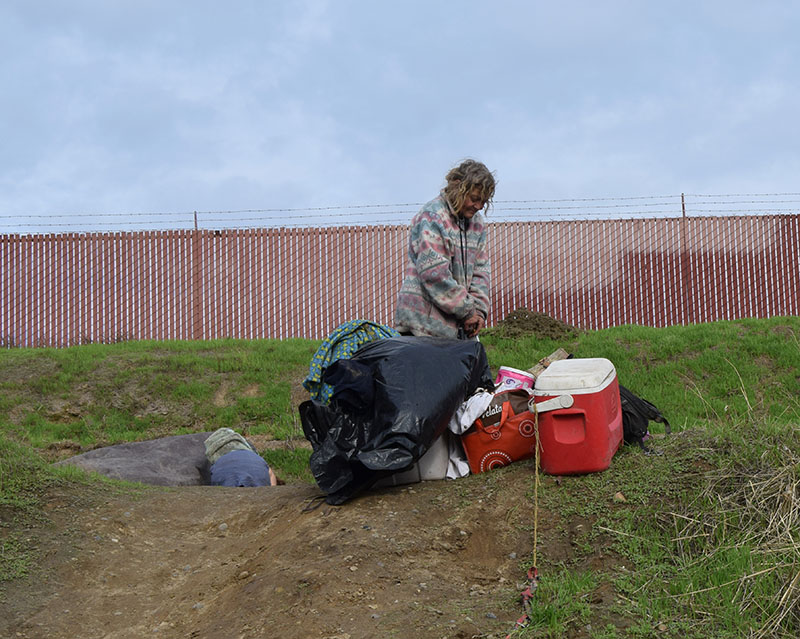
Closing MOES proved to be both costly and cruel. It forced hundreds of people back to Modesto’s streets, parks, alleyways, and riversides.
When MOES closed, tactics for addressing homelessness reverted to two traditional and obsolete options — shelters and sweeps. Both are costly and ineffective.
In its first year of operation, the Stanislaus County low-barrier shelter placed 71 people into housing. That’s an impressive number in a county with severe housing shortages, but it’s not even half of the shelter’s capacity. Observers couldn’t help wondering why those same people couldn’t have been moved from MOES at far less expense.
At a cost of $2.4 million to retrofit half the Salvation Army’s Berberian building, and ongoing expenses of just under $2.8 million to maintain and manage it, the low-barrier shelter had its two-year anniversary in November of this year. For various reasons, including the advent of Covid-19, occupancy at the shelter has sometimes been as low as 80 residents. Some have been there since it opened.
According to Major Harold Laubach, who directs management of the shelter under the county’s contract with the Salvation Army, 40 percent of the residents are mentally ill.
While no one today questions the well-documented history of the closing of mental institutions during the 1980s, people still think that, somehow, mentally ill people will receive the care they need after a short stay in an emergency shelter. Such care is seldom available and very costly in any case.
Many shelter residents are disabled and in wheelchairs. Most receive disability benefits of around $1,000 a month, well below the income needed to afford rent, even if an apartment were available. Almost all need at least a minimum of medical care and services.
Originally meant to serve short-term needs, today’s emergency shelters have become long-term residences by default. For many people, there’s nowhere else to go other than the streets. This is especially true for people experiencing mental and physical illness, desocialization, malnutrition, sleep deprivation and the many other afflictions associated with extreme poverty.
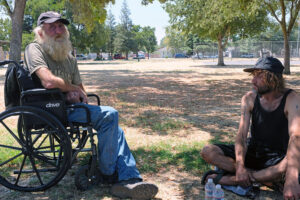
Any population of 182 members would be difficult to manage over the long term, but the homeless population brings with it a host of special problems. Especially since the Ninth Circuit ruling permitting camping when other alternatives aren’t available, local authorities tend to argue that available beds means available services for the homeless. In fact, appropriate services are seldom to never available.
The difficulty of managing people with special needs in a warehouse-type facility featuring bunk beds, communal showers and bathrooms means establishing rules and punishments that often result in evictions. A great many of the county’s shelter residents have been kicked out for various reasons, often for as long as a month at a time.
Once such person is Kenneth “Pops” Yarber, a wheelchair-bound man in his sixties. Pops says he was kicked out of the low-barrier shelter for smoking marijuana on grounds outside the shelter. Authorities at the shelter say he was evicted for other reasons. Whatever the case, Pops now chooses to live in a local park. He is one of many for whom long-term shelter living doesn’t work. He was far better served at MOES, where he had the privacy of a tent and a support group of peers, volunteers, and service providers, all at a cost to taxpayers of $13 per day.
Many homeless people refuse to go in shelters because they’ve endured too many broken promises about services and housing. In the early days of Stanislaus County’s low-barrier shelter, residents were told they would have housing within six months. Two years later, there’s still not enough housing. The cost of building apartments in the San Joaquin Valley is over $400,000 per unit and it will be years before there’s enough to meet the region’s needs. Meanwhile, homeless numbers continue to rise.
If shelters are a costly and ineffective tactic for addressing homelessness, sweeps are even worse.
November Sweep near Briggsmore Avenue, Modesto
In Stanislaus County, sweeps can cost tens of thousands of dollars and seldom move homeless people more than half a mile away. Oftentimes, people begin trickling back to a recently cleared area within a day or two.
“They’ll be back in a couple of weeks,” said one observer at a recent sweep near Modesto’s Briggsmore Avenue.
“Couple of weeks?” said another, “More like a couple of days.”
Ultimately, the inability of state and local governments to address homelessness is the result of several factors, not least among them failures to comprehend the consequences of broken systems of care, rising housing costs coupled with stagnant incomes, and the punishing effects of extreme poverty on people’s brains and bodies.
Too often, instead of treating homelessness like an emergency, politicians would rather argue about causes. Stanislaus County’s “Focus on Prevention” program, for example, was never intended to get people off the streets; rather, it was seen as a way to reduce costs associated with extreme poverty.
“Homelessness won’t end until we get at the root causes,” said Stanislaus County Supervisor Terry Withrow recently, in what amounted to an admission of defeat in dealing with the rising tide of people on the streets. Stanislaus County’s 2021 homeless count of almost 3,000 people was 40% more than in 2020.
Withrow’s position isn’t unusual, but it’s a futile approach to an ever-growing problem. Debating the “root causes” of homelessness is like bailing rising floodwaters into a sieve while arguing about whether they were caused by heavy rain or melting snow.
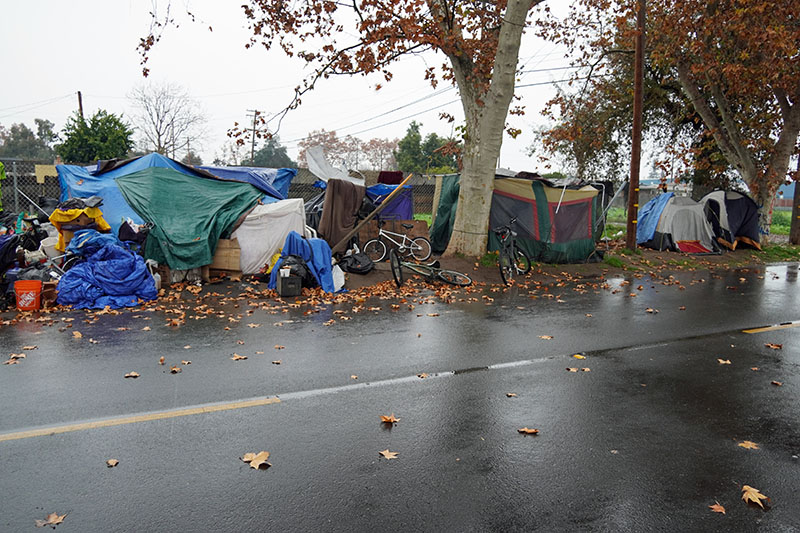
Homelessness is an emergency. Emergency room doctors don’t waste time asking why someone is bleeding out. Their first priority is to stop the bleeding.
Like the budget for the state of California, Stanislaus County’s budget features a healthy reserve. This year’s General Fund registered $411.8 million with a reserve of over $254 million. Funding for the construction and maintenance of the low-barrier shelter came through federal and state money. Stanislaus County didn’t contribute.
Given the abundance of open space and available funding for “safe ground” encampments, Stanislaus County’s failures to stem the rising tide of homelessness are less defensible than San Francisco’s, where almost every square foot is occupied and astronomically expensive. Nonetheless, both places suffer from failures of state and local government to address problems that have been shuffled off onto residents and businesses in what amounts to a form of regressive taxation.
Homelessness isn’t a partisan issue, nor will it go away as the result of debates about “root causes” or arguments about politics and politicians. Things will change for the better only when homeless people are recognized as fellow members of our communities who need care, compassion, and a place to rest. That recognition won’t come from political leaders who long ago abandoned the poor and working people in order to serve wealth and power.
Meanwhile, the burdens of depreciating property values, lost business, and declining quality of life will be borne by citizens who are already becoming inured to bodies on our sidewalks, tents in our parks and along our freeways, and a rising crescendo of agony from fellow Americans with nowhere to go.

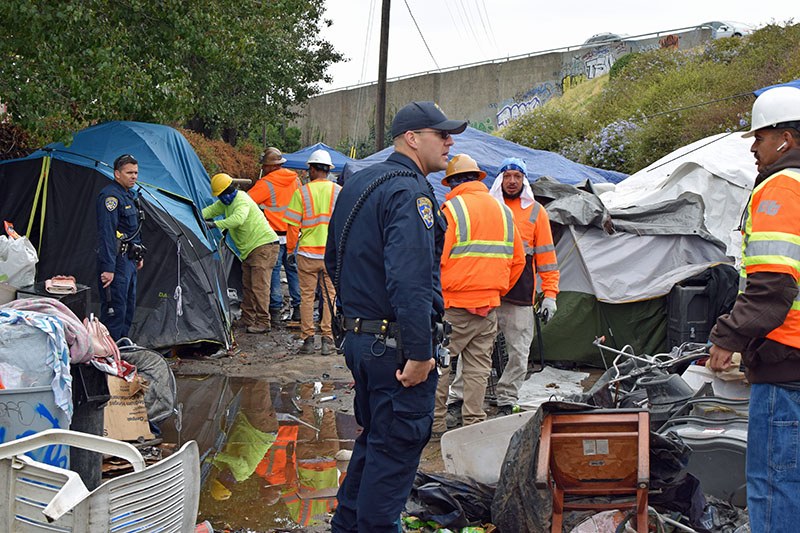
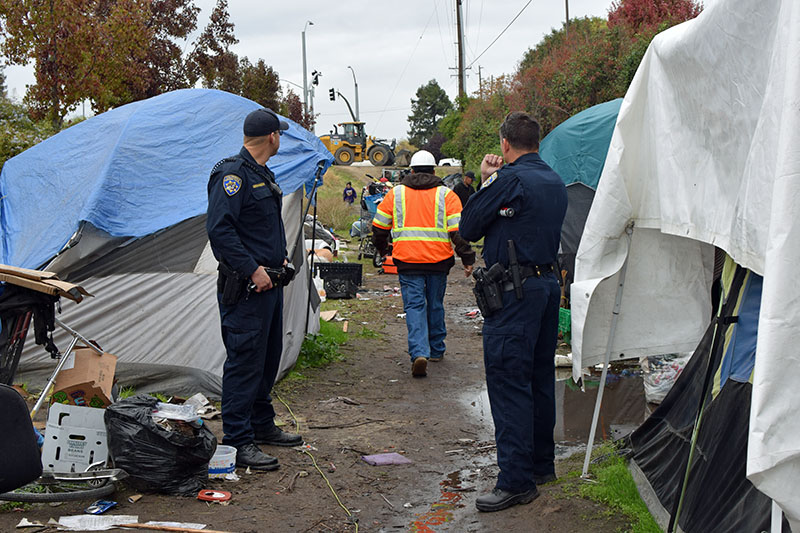
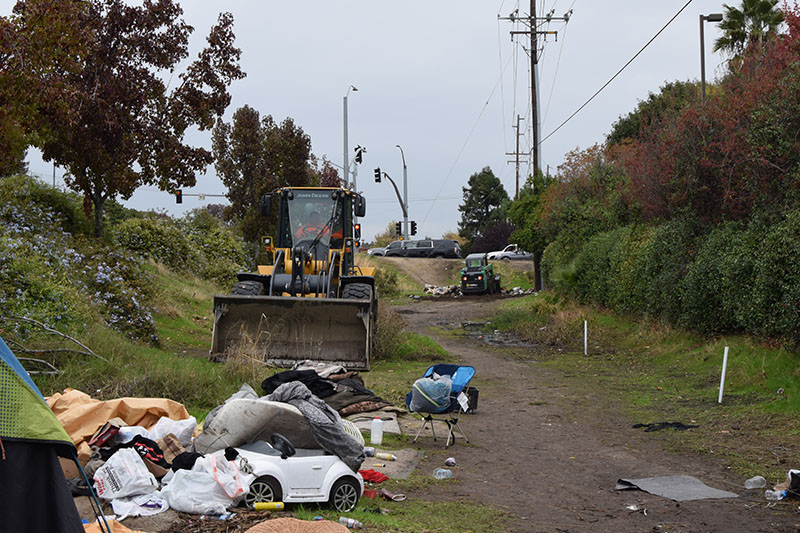
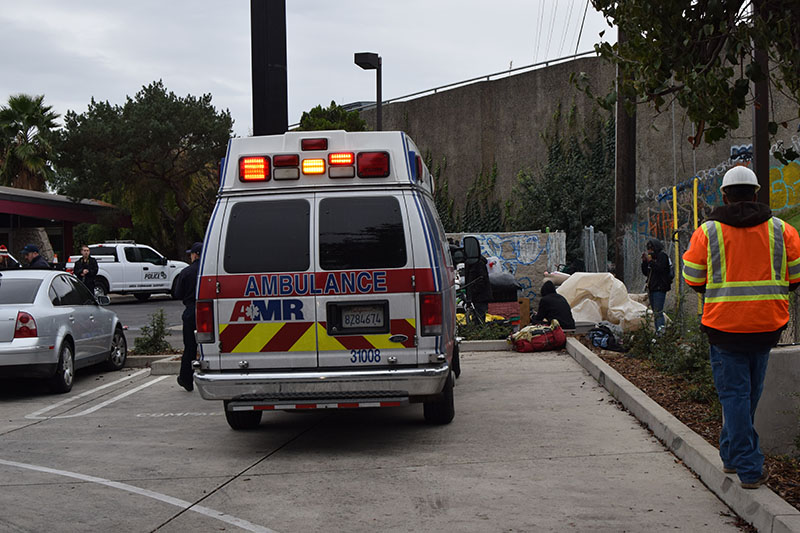
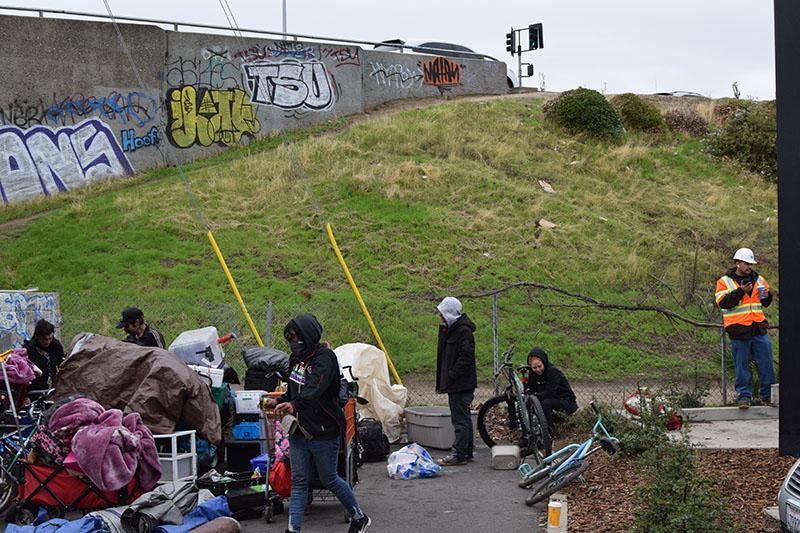
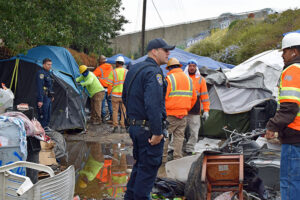
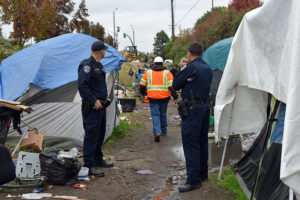
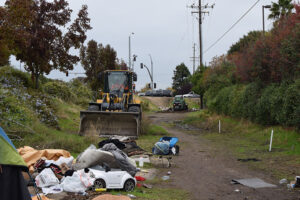
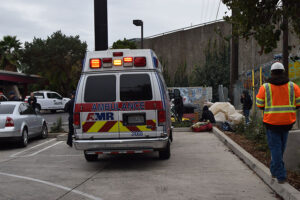
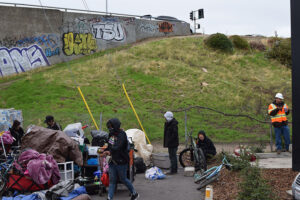
MOES was too large to manage, Beard Brook was a fiasco and dangerous. A lot of time has been wasted on this issue doing nothing. Fenced micro housing enclaves of up to 20 units scattered throughout the community would do wonders. Have to have oversight for smooth functioning. Communal kitchen, living area and bath could be put together for each enclave. Suggest starting with churches who are interested, they could host a quantity of units that they would feel comfortable with. A less expensive way of doing things and having clients take responsibility for their living environment makes sense. Duplicate what Eugene, Oregon has been doing for years but on a grander countywide scale.
It’s always nice to dream John. Right now people from MOES and Beard Brook are scattered around town, but that’s not “a fiasco and dangerous,” is it? Of course the alternatives you offer are preferable to MOES and Beard Brook. So are colonial mansions. Neither is going to happen. I visited MOES and Beard Brook several times a week; felt safer there than in some of our parks. How often did you visit?
The money is there, just have to do it. Any progress on this issue seems to be mired on the 6th floor. I visited, I saw. I’m not hands on with this issue at this time. Perhaps that could change. Currently I visit many classrooms and do what good I can there. Confounded as to how we’re any different from Lane County. Must be the culture as theirs differs greatly from ours. Will never give up hope, why would you? Change happens, stuff can suddenly move quickly. Up to you to choose your demeanor about it, try to be positive.
I agree John, that the “money is there.” However, I don’t see the political will here to use it on homelessness. I remain positive in the belief that local voters will realize we need political change before we see progress on homelessness. Meanwhile, the most humane and cost-effective tactic is a “safe ground” policy both for those living in vehicles and those on the ground.
Could not disagree more about MOES. Opening MOESs meant no freeway side encampments, human crap in public parks, and a clear decline in petty crime and quick and better medical outcomes for overdoses. Yes there were problems but aren’t there always when launching a new initiative. Your criticism is like saying the Wright brothers were failures because the kitty hawk didn’t have in flight entertainment services. Ya gotta start somewhere and MOES was as good as any. The alternative? Oh right we are living it again. I had a guy OD in my doorway, a crazy lady push her flaming cart up against my church and nearly burn it down. I’ve shoveled more human feces than I care to remember. Because of all of this we allocated $28,000 to build a security fence instead of investing in people or alleviating poverty. Go Modesto 👍🏻 Go Stanislaus County 👍🏻. Here’s your daily dose of reality from a Modesto area business owner.
An interesting discussion. Ever Wonder what homeless people do in colder climates? Such as Chicago, Detroit, NYC……or better yet, how does Europe handle this issue, or Russia or China…… Homeless issues are much bigger in warmer climates than colder ones. Part of the issue is classified as mental institutions that were closed because some abuses existed. Part of the issue is the high cost of housing (which is getting worse). trying to fix this issue with broad strokes of action by government will help , but not solve the issue. I wonder- how much money has every local , state and federal government spent on homeless solutions over the past 21 years? I would wager the amount is in the Trillions and yet the problems is still here….hmm…creative solutions should be considered. I once saw an article in a far away paper about this issue and the writer pondered all the $ spent that year in the USA on homelessness. The writer suggested: pool all of those dollars, buy 1000 cruise ships and put all the homeless on the cruise ships and cover the cost of cruising for a year……that would service about 3,000,000 homeless at a cost of about $50 Billion- the writer suggested that this would be cheaper than the projected $100 Billion spent in all the big cities in the USA. But, I suspect there are far more than 3 million homeless folks in the USA.